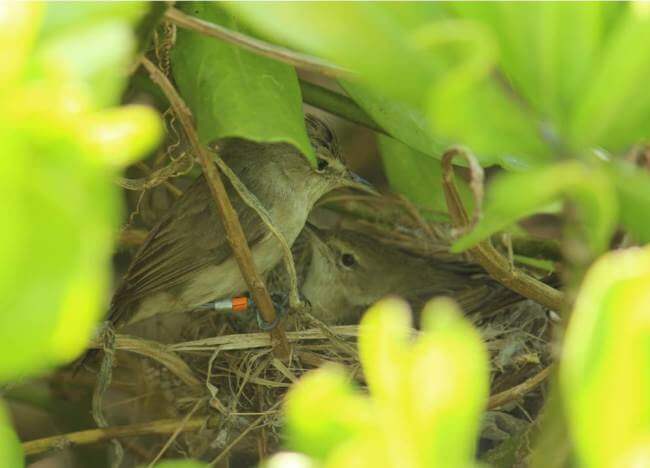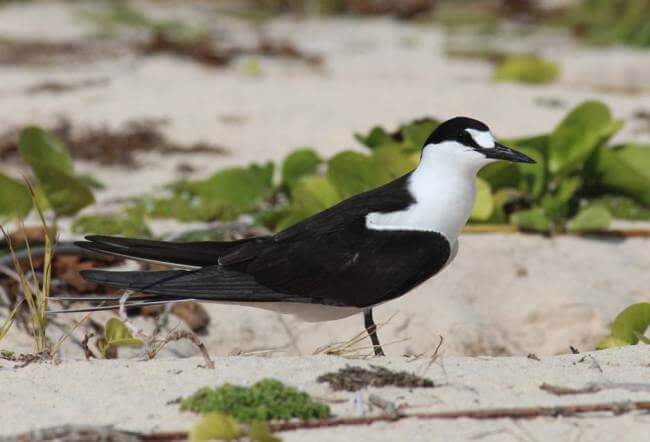As Busy as a Millerbird

Caption: Male Nihoa Millerbird, tagged B/G:S/O, visits his mate at their nest. A chick fledged from this nest on May 17, 2013. Photo: Megan Dalton
May 6-19, 2013
Megan Dalton
The past two weeks have been quite productive, both for the Millerbirds and for us in the field. We are currently following 23 pairs engaging in breeding behavior, which means Michelle and I are busy trying to keep up with all the activity.
This is not an easy task when there is so much going on at once! We managed to find six new nests, band several nestlings, and observe three Millerbird chicks fledge during the last two weeks. With a handful of pairs working on constructing new nests, and at least 10 more incubating eggs or brooding nestlings, it doesn't look like things will slow down anytime soon.
Very interestingly, we found a pair of Millerbirds reusing a nest in an area we call the Northwest Bowl. They fledged two chicks in mid-April and have apparently decided that the nest is good enough for another go-round, as they are currently incubating one egg there. It is normal to see pairs building a new structure in the same bush where their previous nest was located, and the birds sometimes parasitize the old nest material to build a new nest, but to our knowledge this is the first documented instance of a Millerbird actually reusing an old nest.
Nature Sighting of the Week
Sooty Terns are the latest numerous and noisy bird species to demand our attention. Although flocks have been present behind our camp and in other areas around Laysan since we arrived in March, both the numbers of birds and the sounds they make seem to have increased, making normal activities like conversation and sleep a bit of a challenge. We hope they make up for this soon by giving us many fluffy chicks to look at.
“Sooties” are known for being very aerially inclined–they can spend years on the wing after fledging without ever touching land and are reluctant to land even on the water. They forage by taking fish and other prey at the ocean surface and dive only occasionally. When they finally do come to an island to breed, the tens of thousands of birds spend one to four months circling in the air over the site of their colony before actually setting foot on the ground to lay. Along with Lisianski Island to the northwest, Laysan is home to over half of Hawai‘i's breeding Sooty Terns.
Many of the shorebirds seem to be moving on to their breeding grounds in the boreal forest and Arctic tundra, as we are seeing smaller numbers of Wandering Tattlers, Pacific Golden-Plovers, Ruddy Turnstones, and Bristle-thighed Curlews around the island. The only other migrant of note was a group of 25 Sanderlings feeding on the lakeshore, most of them decked out in breeding plumage.
Back to counting Millerbirds. See you in a few days from the beautiful island of Laysan!
 Megan Dalton is a Millerbird
Megan Dalton is a Millerbird
monitoring biologist on Laysan.



















































